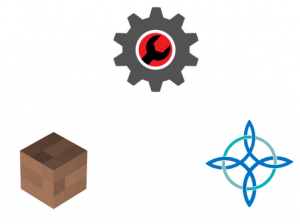BLACKSBURG, Va., Feb. 26, 2015 – AddHawk is a group of Computer Science students taking their HumanComputer Interaction capstone project to a massive scale. They begun working on an application called PixelPusher, a massive crowdsourced display in Lane Stadium, using all the attendees mobile device screens as pixels. This type of project, mobile phone mosaics, has been attempted by several companies before, including Sony, HTC, and Blinkendroid. “The current guinness world record is 400 devices, we’re optimistically looking at 50,000.” said PixelPusher developer Michael Peter. The current record belongs to China Unicom, Sohu IT and HTC which used 400 HTC One devices in July of 2013, playing a one minute advertisement. This project could beat that record by over a hundred times the amount of screens.
Updates on PixelPusher:
The team has officially changed its title, now going by the name AddHawk. PixelPusher will, however still be the name of the software being developed. The team feels that this is an important change to mention going forward with development.
This week the team laid out a project plan and schedule while dividing the project into smaller, more manageable roles. The AddHawk team split into two different squads: a backend and a frontend development team. The backend team is made up of AddHawk’s Michael and Christopher and will primarily focus on the connection of the devices and the issues the application will face in Lane Stadium. “I would love to work on the backend team because working on something like this is a once in a lifetime experience.” says Christopher Wood enthusiastically. The frontend team is composed of the remaining AddHawk’s, Connor and Dillon, and will mainly work on the interface and user experience aspects of the application.
The team is currently looking at a 9week work period with the majority of the development picking up around week 4. Both development teams have planned different milestones such as scouting out the location and meeting with the sponsor to finalize design ideas.
A Look Into the Future:
In the upcoming weeks, the AddHawk team plans to conduct a contextual inquiry. This will involve the entire team’s effort in interviewing multiple people whose expertise and/or experience is relevant to our goals. We will analyze the data obtained from these interviews in order to gather a more informed picture of what design requirements need to be established. These design requirements will guide the team before and during the development process. The team also plans to begin prototyping and subsequently start developing the PixelPusher software.
“We’re very excited to get started with the development of PixelPusher! We are about to discover what the system is going look like from the perspectives of the various roles we’ve assigned to our team members.” Connor Hoene, PixelPusher Developer.
Mission Statement:
PixelPusher will allow football fans in Lane Stadium at Virginia Tech to display individual pixels on their phones which are part of a larger image. In this way PixelPusher acts as a crowdsourced collaboration application that will bring together football fans everywhere. PixelPusher also aims to break the current world record of 400 connected devices. The application will be developed with the idea of simplicity and efficiency at heart, providing a lightweight, seamless user interface to football fans at Virginia Tech. “AddHawk is an up and coming software development initiative aimed at revolutionizing how a single member of a crowd can have a huge impact on an event. ” For more information or questions please contact: cmw2379@vt.edu

